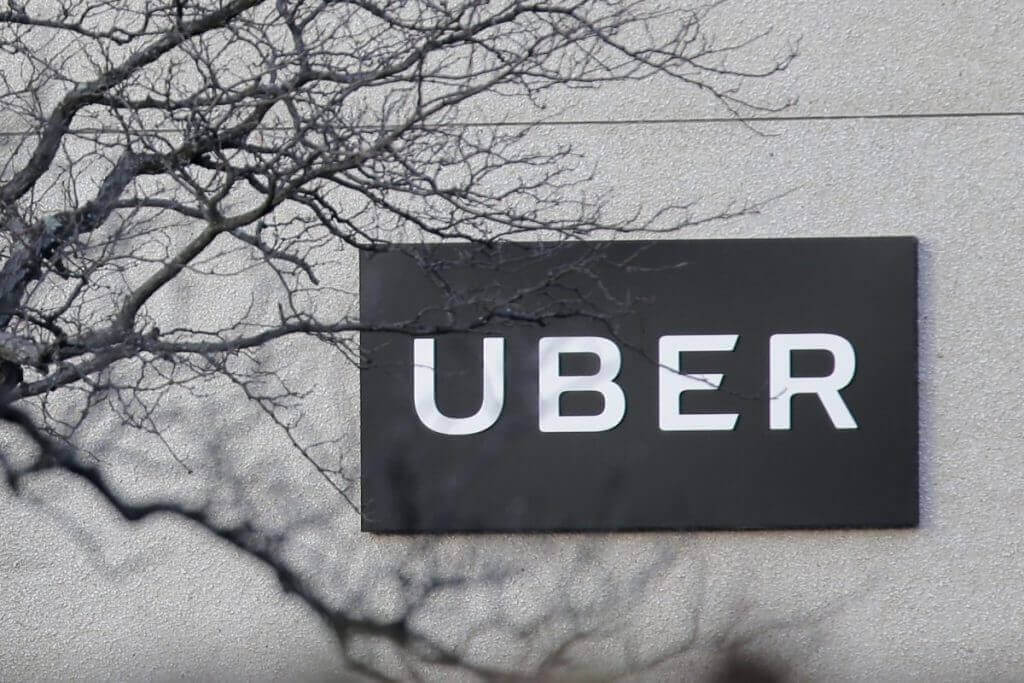
Uber is transforming before our eyes. | Image: AP Photo / Seth Wenig, File
- Since the coronavirus struck, Uber has shifted attention to different businesses, like Uber Eats and Uber Freights.
- As a segment, personal mobility’s importance is likely to fall in the years to come.
- The shift will be Dara Khosrowshahi’s main legacy.
Recent developments show that Uber (NYSE: UBER) is not letting a crisis go to waste. From layoffs to acquisitions, Uber is taking full advantage of the coronavirus pandemic.
Based on recent shifts, don’t be shocked if rides only contribute to a fraction of the company’s revenues in the coming years.
Uber Eats is already growing at a faster rate than the ride-hailing business, despite launching five years later.
Uber Eats Grows as Rides Slows
In the most recent reported quarter, gross bookings from the Uber Eats business were nearly half of gross bookings from the ride-hailing business. Eats’ gross bookings amounted to $4.68 billion versus $10.87 billion for rides in Q1, 2020.
During the same period a year ago, Eats’ gross bookings were $3.07 billion while it was $11.45 billion for rides.
In an earnings call regarding Uber’s Q1 2020 results, CEO Dara Khosrowshahi said:
The big opportunity that we thought Eats was just got bigger.
Compared to a similar quarter last year, Eats’ adjusted net revenues surged by 121%. Over the same period, adjusted net revenue for rides recorded 4% growth.
Other Bets Paying Off Too
The food delivery business isn’t Uber’s only star performer. Uber Freight and Other Bets did equally well during the same quarter. Revenues from Uber Freight rose by 57%. Other Bets recorded a 66% revenue increase.
Uber’s non-ride hailing businesses are growing much faster than the core business | Source: Uber Website
The trend will only accelerate after Khosrowshahi outlined his priorities for the company. And they are not in ride-hailing.
The proof is in the job cuts. Ride-hailing is still the main business, but Uber is drastically reducing the number of full-time employees as it invests in non-personal mobility businesses.
Earlier this month, the ride-hailing company announced that it was laying off about 3,700 full-time employees. This is about 14% of the company’s full-time workforce.
Source: Twitter
Uber Reveals Its Priorities
Those layoff numbers are expected to rise as new reports indicate thousands of other full-time positions are on the chopping board.
Source: Twitter
At the same time, Uber has made or is eyeing strategic acquisitions and investments in non-core businesses. The mobility company appears to be shedding fat where it sees little upside potential and investing in higher growth opportunities.
Besides acquisitions, the mobility firm is developing other revenue streams that aren’t dependent on personal mobility. This includes Uber Direct and Uber Connect. These services will allow retailers to send packages to customers. Peer-to-peer shipping services will also be available.
As telecommuting gets more popular and public transportation becomes less attractive, the demand for these services should increase.
CEO’s history says it all
Dara Khosrowshahi’s acquisition history at Expedia (NASDAQ: EXPE) where he was CEO for over a decade, is also revelatory. Khosrowshahi focused on acquisitions that solidified Expedia as an online travel firm. His stint is largely remembered as a success.
Some of Khosrowshahi’s major acquisitions at Uber include purchasing majority ownership in South America’s online grocery provider Cornershop.
The ride-hailing firm is also currently in discussions to acquire food-delivery firm Grubhub (NYSE: GRUB).
Source: Twitter
Khosrowshahi’s acquisitions are just an acknowledgment that ride-hailing is not the future for the mobility giant.
There are other, more promising opportunities available. Don’t be surprised by how much you won’t recognize the ride-hailing pioneer in the years to come.
Disclaimer: This article represents the author’s opinion and should not be considered investment advice from CCN.com. The author holds no investment position in Uber at the time of writing.
This article was edited by Aaron Weaver.






